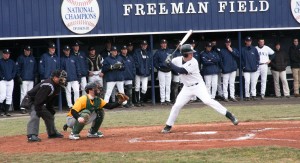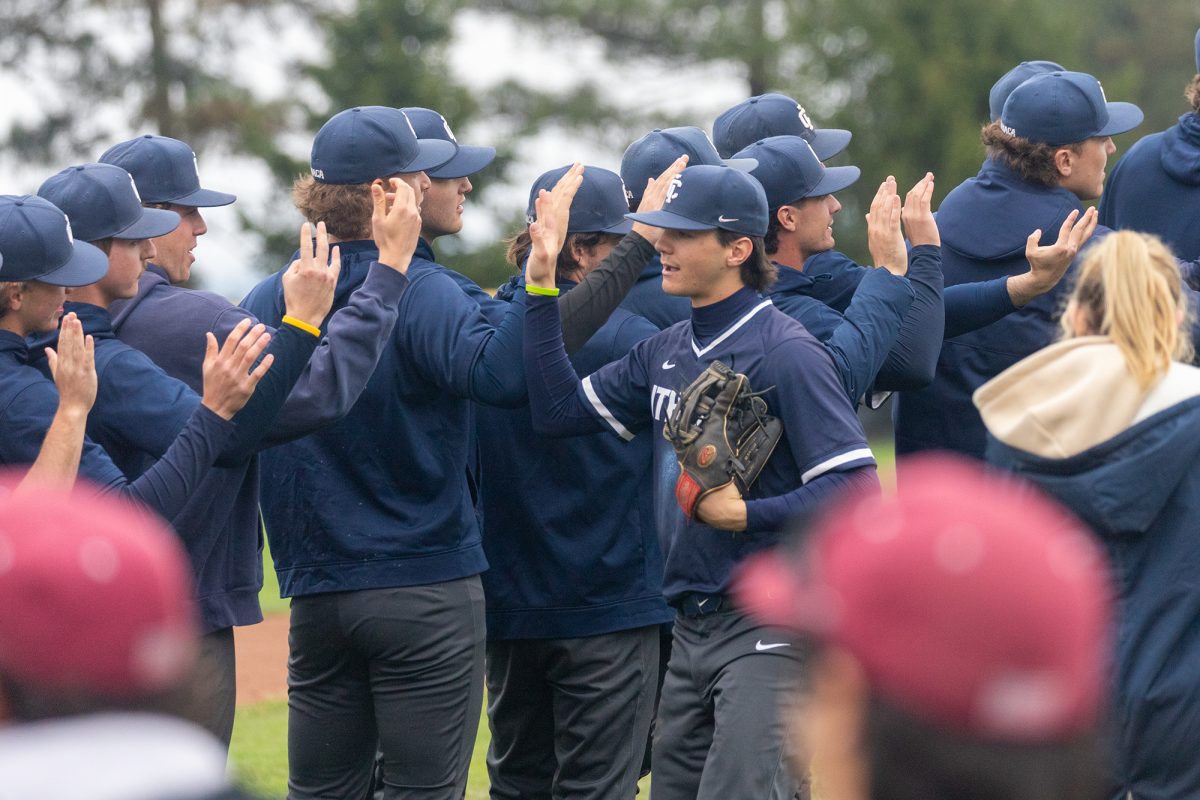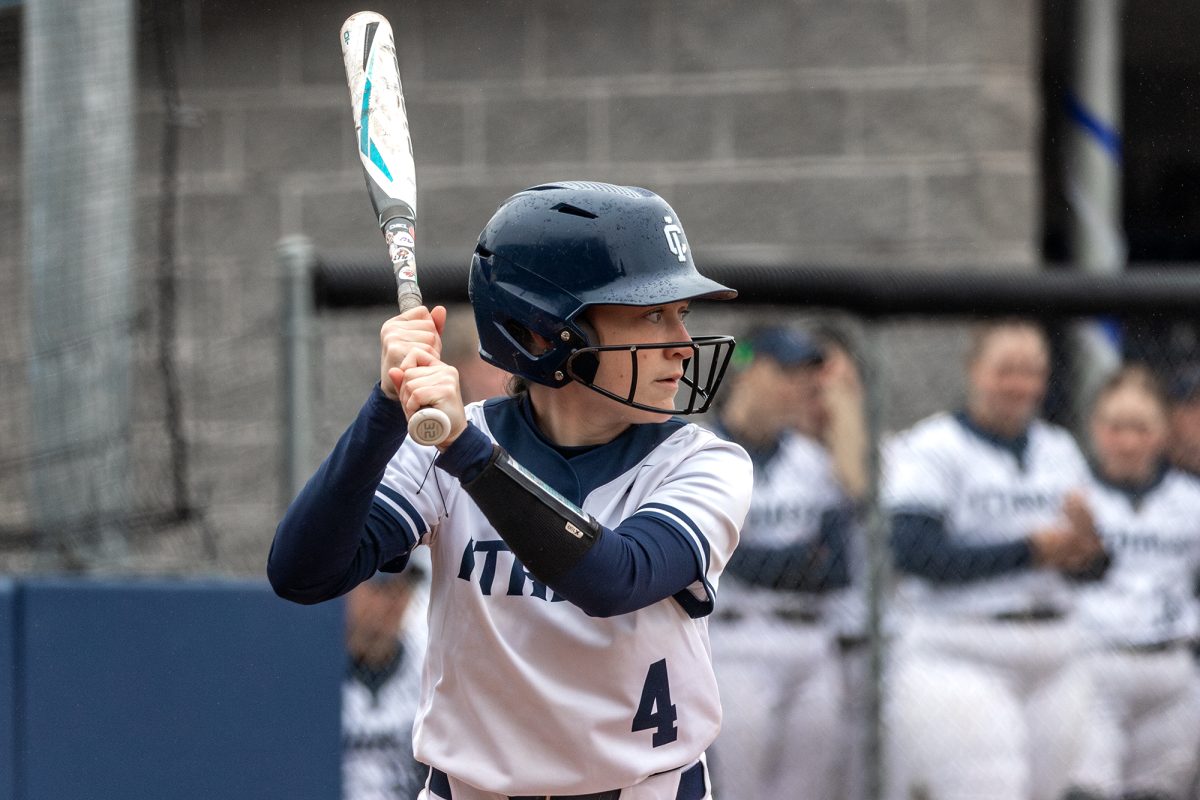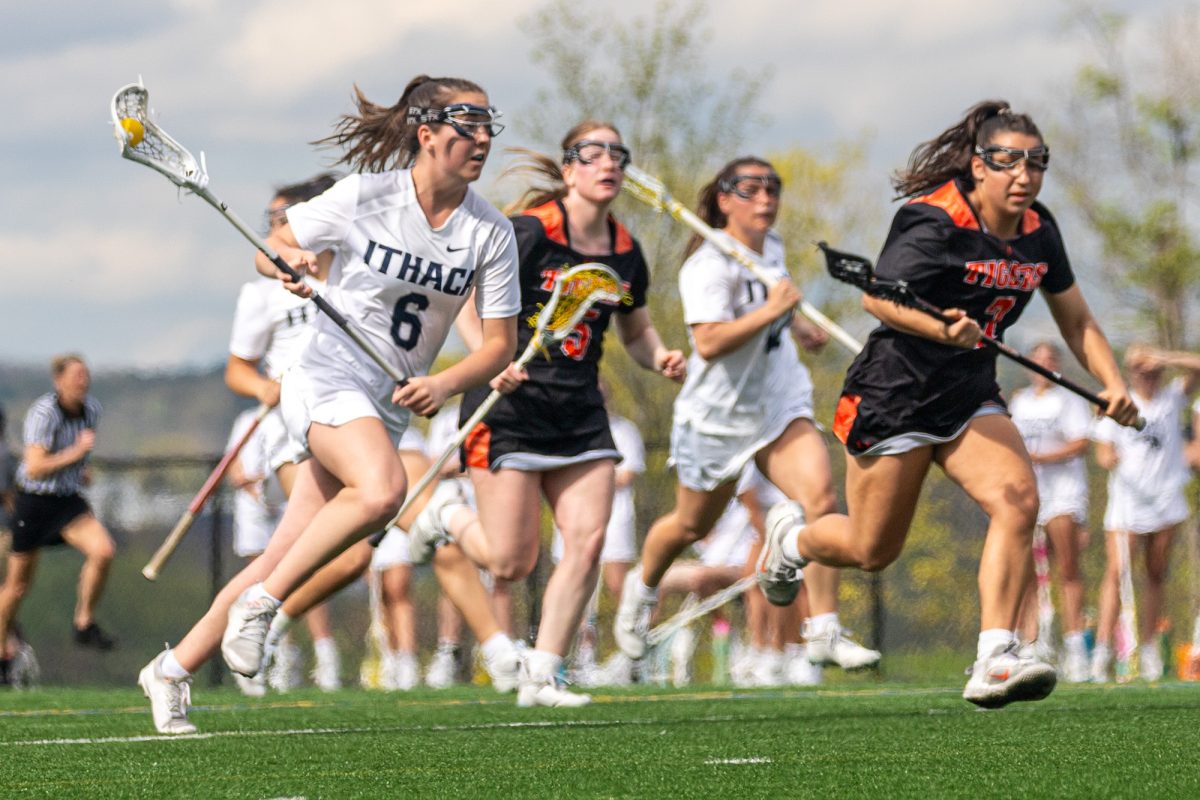The notorious “ping” that had accompanied college baseball is no longer a part of the game.

This season, the NCAA banned the use of flexible graphite composites in bats, which increase exit speeds of a baseball up to 20 miles an hour, in all divisions of collegiate baseball. The move is designed to not only lower home run totals and place more emphasis on manufacturing runs, but also to improve player safety.
By shrinking the sweet spot, the area on a bat where solid contact is made, from five or seven inches depending on the quality of the bat, to three inches, bats now require players to execute more mechanically sound swings in order to be successful at the plate.
In order to better prepare for the new bats, graduate student Dave Ahonen said the team practices with wood bats, which like the new bats, remain rigid instead of bending when struck by a ball.
“When you’re using wood you really need to have a perfect swing to make solid contact,” Ahonen said. “We figured using wood to prepare would be the best way regardless of what happened.”
Junior infielder Teagan Barresi said the Blue and Gold knew hitting the gym this offseason would be a priority. He said the team focused on increased weight training to build muscle to make up the difference.
“We all knew that ball wasn’t going to fly off the bat the way it did before so weight lifting became a big priority during the winter,” Barresi said. “Guys knew they’d have to be stronger to get the bat speed they needed to produce the results they had been before.”
Barresi said he easily noticed balls were not traveling as far as they had in past years.
“It was clear right away that the ball wasn’t coming off the bat like it did last year, and you certainly feel it when you make solid contact,” he said. “It just forces you to square up better and be more selective with pitches.”
Head Coach George Valesente said the change in bats is also a safety precaution for pitchers who are most frequently injured by hard hit balls.
“I’ve always been a proponent of using wooden bats anyway,” he said. “So, in that respect, any time you can get closer to that is going to be good for the game and obviously safer for the players, because they do have more time to react now.”
Ahonen said compared to the old bats where the weight was more evenly distributed, the new bats feel like the weight is in the barrel and have a cheaper feel to them.
“Some of the caps at the end of the barrel have been popping off when you hit the ball off the end of the bat,” Ahonen said. “It seems like in order to decrease exit speeds, they’ve also lowered the quality of the product.“
Valesente said the switch will not only generate fewer home runs, but bring the game back to its roots of pitching and defense.
“When the NCAA decided to look at the technology and reel it in a little bit, the idea was lower scoring, faster games,” he said. “Now we have to wait and see if it works out that way.”







